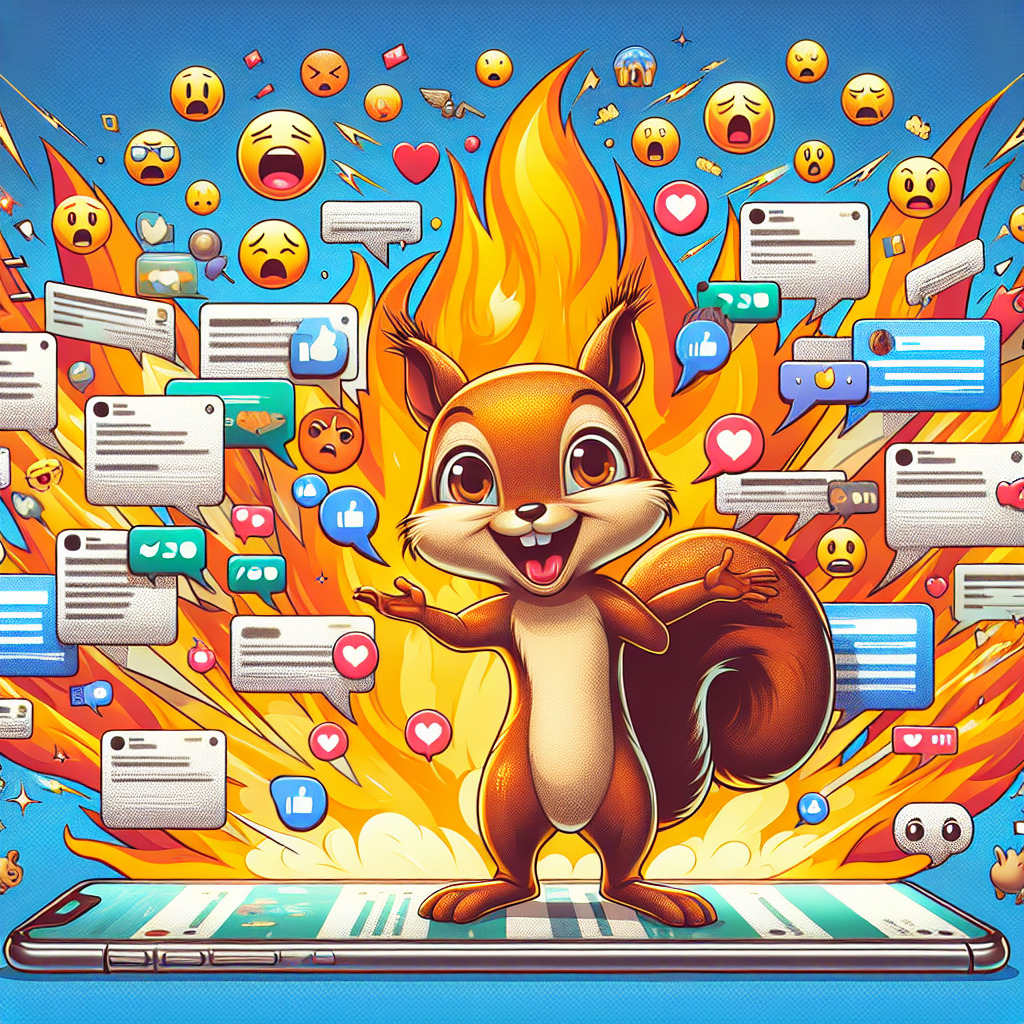Key Takeaways
The Backstory
The recent euthanization of Peanut the Squirrel has ignited a firestorm on social media. Known for his cute antics and playful demeanor, Peanut was a beloved local figure in the Pinewood community park. His presence was cherished by regular park-goers and had even become a focal point for visitors looking for a picturesque selfie with the friendly squirrel. But what led to the controversial decision to put Peanut down?
The Contested Decision
Peanut’s story took a tragic turn when local wildlife officials decided to euthanize him. The decision was reportedly made after observing Peanut’s declining health and concerns about potential contagion to other wildlife populations in the park. However, this justification did not sit well with the public. A statement by the wildlife authorities emphasized that the decision was not made lightly and was guided by the experts focusing on maintaining a healthy ecosystem.
The Social Media Outcry
As soon as the news of Peanut’s euthanization broke, it quickly became a trending topic on social media platforms like Twitter, Instagram, and TikTok, under hashtags such as #SavePeanut and #JusticeForPeanut. The story resonated deeply, attracting the attention of not just local residents but also international followers who were outraged by the actions taken against this cuddly creature.
Users flooded the platforms with posts:
- Sharing personal stories or photos of Peanut
- Voicing anger and disbelief over the authorities’ decision
- Demanding transparency and accountability
Influencers Weigh In
Animal rights activists and social media influencers quickly took up the cause, amplifying the issue to their broad audiences. Some prominent figures in the animal rights community have urged followers to rally behind stricter protection laws for wildlife and to re-evaluate how such decisions are made. Their involvement has undoubtedly lent weight to the outrage and pushed this debate to broader media channels.
The Ethical Debate
Peanut the Squirrel’s case has brought to the forefront ethical questions about the treatment of urban wildlife. With many people questioning whether the right measures were taken, it has sparked a larger debate about humane practices and the decision-making processes involved in wildlife management.
Balancing Public Safety and Wildlife Welfare
The ethical dilemma often boils down to balancing public safety with the need to preserve and care for wildlife populations. While authorities claimed that Peanut’s deteriorating health posed a risk, critics argue that more could have been done to relocate or rehabilitate him instead of opting for euthanization.
Points of contention include:
- How wildlife health assessments are conducted
- The availability of rehabilitation options
- Transparency in decision-making processes
Lessons and Moving Forward
The conversation around Peanut’s case isn’t just about controversy; it’s also about seeking to understand and improve the systems that are in place for wildlife management. The overwhelming public response serves as a crucial reminder that people expect accountability and transparency, especially when dealing with decisions impacting beloved community animals.
Opportunities for Change
In light of the uproar, several initiatives and discussions have been proposed, focusing on developing better policy frameworks for animal welfare and improving stakeholder communication. It is crucial for authorities to engage with community members, animal rights organizations, and ecological experts to establish clear and humane practices when dealing with similar situations in the future.
Potential steps include:
- Enhanced training for wildlife officials
- Improved public awareness and education programs
- Collaborations with animal welfare organizations
The Role of Social Media in Sparking Change
Peanut’s story exemplifies the power social media can wield in bringing attention to, and potentially driving change on, social issues. Platforms that facilitate immediate global dialogue have the ability to put pressure on local authorities and hold them accountable. They also encourage communities to rally together for shared causes.
Social Media as a Catalyst
The virality of Peanut’s plight underscores social media’s role as a modern-day catalyst for social activism. Not only does it provide a voice to those who otherwise may remain unheard, but it also fosters connections across geographic boundaries, empowering a collective push for ethical actions.
In conclusion, while the fate of Peanut the Squirrel is regrettable, his story has become a symbol of advocacy and an impetus for examining and reforming how we as societies interact with and protect the wildlife that enriches our lives. Now is the moment to transform public sentiment into tangible actions that will honor Peanut’s legacy and ensure that future decisions reflect our collective values.

